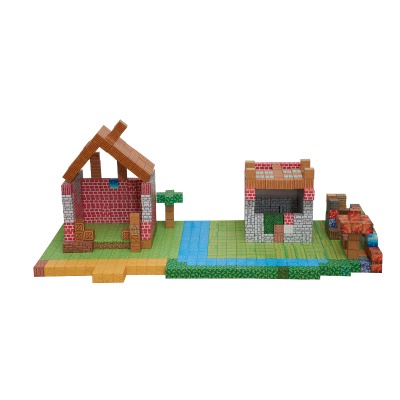Color Magnetic Stick And Buck Ball Set, Educational Decompression And Multi-Shape Building Block Toy
The Color Magnetic Stick and Bucky Ball Set is a versatile and engaging educational toy designed to enhance spatial imag...
See Details
Magnetic building blocks have become increasingly popular as educational toys, offering children the chance to explore creativity, geometry, and engineering concepts. However, safety remains a critical concern, particularly because these toys contain small magnets that could pose risks if not handled properly. Magnetic building blocks manufacturers take various steps to ensure their products are safe for children, while still providing an engaging play experience.
Selecting Safe Materials
One of the first steps magnetic building blocks manufacturers take is selecting safe materials. The plastic or acrylic casings must be non-toxic and free from harmful chemicals such as BPA, phthalates, or lead. The magnets themselves are typically coated or sealed to prevent exposure. By carefully choosing materials, manufacturers reduce the risk of chemical hazards and ensure that children can handle the blocks safely.
Ensuring Magnet Strength and Size
Magnets in building blocks need to be strong enough to hold the structures together, but not so small that they could be swallowed or pose choking hazards. Manufacturers often use magnets that are securely encased within the blocks, preventing them from coming loose during normal play. Additionally, they follow strict guidelines on the minimum size of parts and the strength of magnets to comply with safety standards in different regions.
Rigorous Testing and Compliance
Testing is a key part of safety assurance. Magnetic building blocks manufacturers conduct both in-house and third-party testing to meet international safety standards. This includes checking for small parts that could detach, sharp edges, or breakable components. Drop tests, bite tests, and stress tests are common to ensure that the blocks can withstand rough handling without breaking. Compliance with regulations such as ASTM F963 in the United States or EN71 in Europe is essential for market approval.
Clear Labeling and Age Recommendations
Manufacturers also focus on providing clear instructions and age recommendations. Magnetic building blocks often include labels indicating the appropriate age range and warnings about potential hazards for younger children. This helps parents and caregivers make informed decisions and supervise play appropriately. Some sets also include guidance on safe storage and handling to minimize accidental swallowing or misuse.
Designing for Durability
Durability is another safety measure that manufacturers emphasize. Blocks are designed to resist cracking, chipping, and other forms of damage that could expose magnets. Smooth edges, robust construction, and high-quality materials all contribute to safer play. By designing the blocks to endure repeated use, manufacturers reduce the risk of hazards over time.
Continuous Improvement and Feedback
Safety in magnetic building blocks is an ongoing concern. Manufacturers often gather feedback from consumers and monitor product performance in the market. This allows them to make improvements in design, materials, and instructions. Continuous evaluation ensures that the blocks remain both fun and safe for children of various ages.
Ensuring safety in magnetic building blocks requires careful attention to materials, magnet strength, testing, labeling, and design. Magnetic building blocks manufacturers follow rigorous processes to minimize risks while providing a creative and educational play experience. By prioritizing safety, they help parents and caregivers feel confident that children can enjoy building, experimenting, and learning without unnecessary hazards.